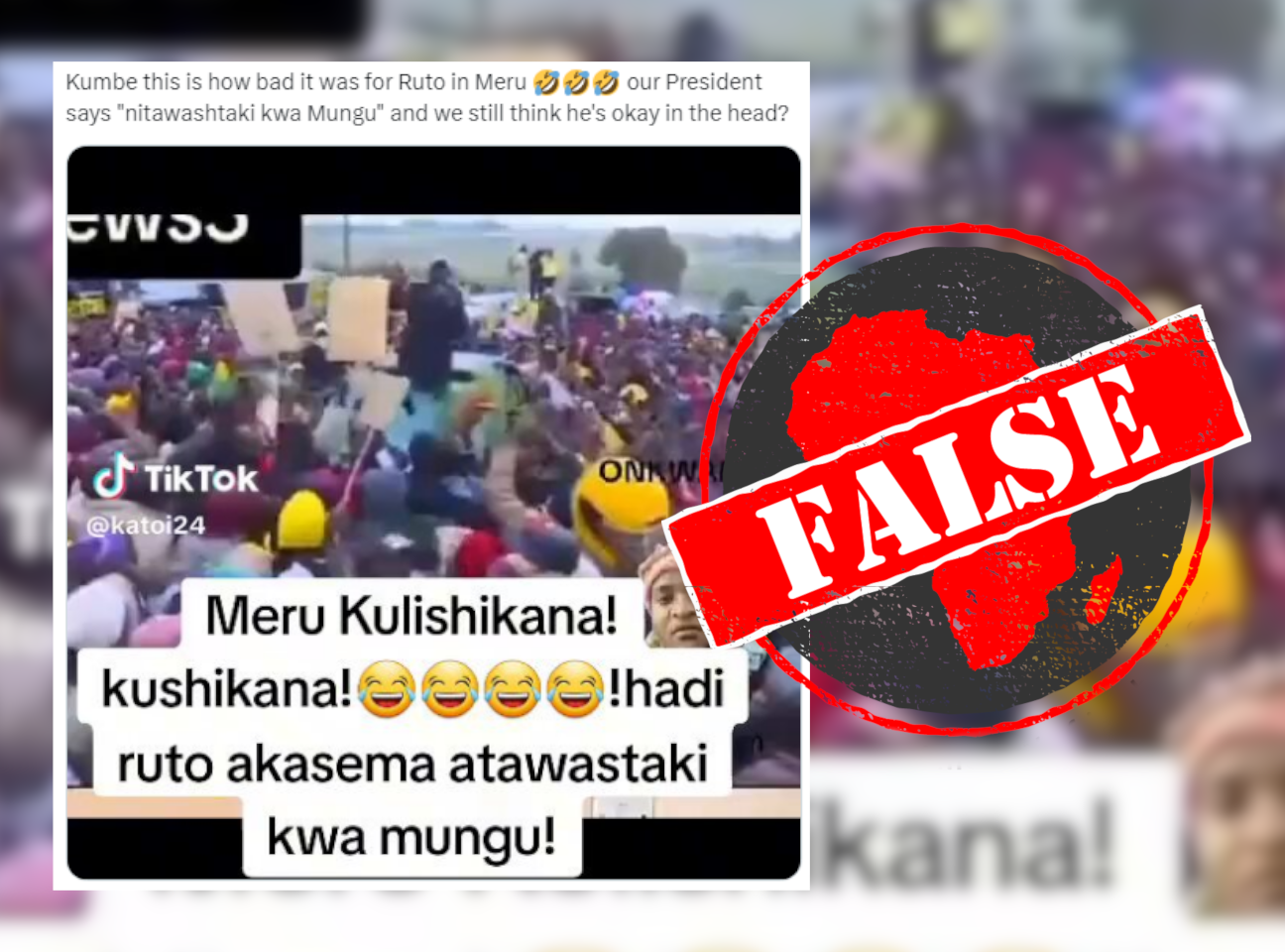IN SHORT: A video on social media supposedly shows president William Ruto trying to pacify a hostile crowd in Kenya’s Meru county in 2024. This is false – it shows two different events from 2023 and neither took place in Meru.
A video posted on X (formerly Twitter) and TikTok shows Kenyan president William Ruto addressing a restless crowd at a public event. In the video, Ruto speaks in Kiswahili and says he will “report” the crowd to God.
The post, written in a mix of Kiswahili and English, translates to: “So this is how bad it was going for Ruto in Meru?”
The video is also captioned in Kiswahili, roughly translating to: “Meru was in such a state of unrest that Ruto said he would report them to God.”
Meru is a county in eastern Kenya, one of 47 counties in the country.
The second part of the nine-second video shows a crowd gesturing angrily at the speaker. It gives the impression that the crowd is dismissing Ruto.
The post on X has over 169,000 views and the video on TikTok has over 2.9 million views. Both have hundreds of comments and engagements.
But does the video show Ruto speaking to a hostile crowd in Meru? We checked.

Heckling of politicians
There have been reports of Ruto, members of his cabinet and ruling party leaders facing hostile crowds, less than two years into his presidency.
Most of these have been linked to unpopular policies, such as increased taxes, and the higher cost of living.
However, the video being circulated online claims that Ruto faces strong opposition in a region where he received massive support in the August 2022 general elections.
Ruto has visited various parts of the country on development tours. These include a four-day tour of Nyanza county in early October 2023 and a three-day tour of Meru in January 2024.
Video made of two unrelated clips
A closer look at the video shows that it’s in two parts. The first part shows Ruto addressing the crowd, and the second part shows a hostile crowd, but does not show the speaker.
A reverse image search of the key frames reveals that the first part of the video shows Ruto’s speech at a rally in Siaya county in October 2023.
We searched Google using clues from the second part of the video, such as the venue, which appears to be a stadium, and the audience's clothing. We found that it was filmed in Baringo county during a football match in November 2023. Transport minister Kipchumba Murkomen was heckled at the stadium while addressing an unhappy crowd.
The first part of the video shows Ruto speaking in Siaya, not Meru. The second part shows the crowd heckling Murkomen – not Ruto – at a football match in Baringo.
Ruto won just over 80% of the vote in Meru and about 1% of the vote in Siaya in the 2022 elections.
The posts claiming the video shows one incident in Meru county are misleading and could inflame tensions in the country.
Republish our content for free
For publishers: what to do if your post is rated false
A fact-checker has rated your Facebook or Instagram post as “false”, “altered”, “partly false” or “missing context”. This could have serious consequences. What do you do?
Click on our guide for the steps you should follow.
Publishers guideAfrica Check teams up with Facebook
Africa Check is a partner in Meta's third-party fact-checking programme to help stop the spread of false information on social media.
The content we rate as “false” will be downgraded on Facebook and Instagram. This means fewer people will see it.
You can also help identify false information on Facebook. This guide explains how.




Add new comment